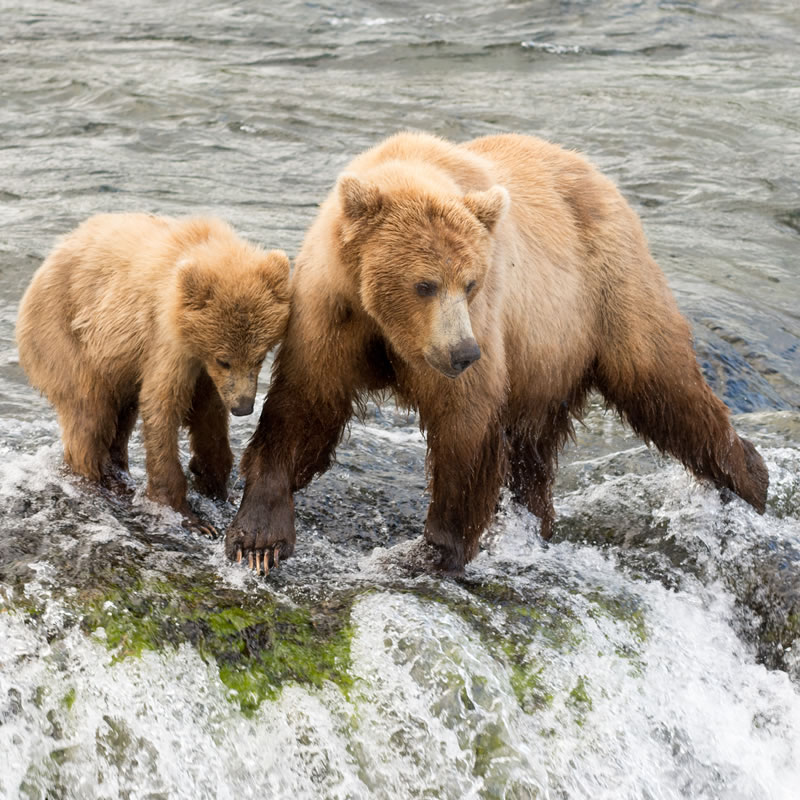
Scientific Name
Ursus arctos
Classification
| Kingdom | Animalia |
| Phylum | Chordata |
| Class | Mammalia |
| Order | Carnivora |
| Family | Ursidae |
| Genus | Ursus |
| Species | arctos |
IUCN Redlist Status

Location and Habitat
Brown bears can be found throughout northern and western Canada and northern Europe. They are commonly found in Alaska and may be seen in the northwestern corner of the United States. Some live near the coast, where salmon are abundant. Others live farther inland in brushy areas. These are the bears that are more commonly referred to as "grizzlies".
Diet
Brown bears are omnivorous, eating a wide variety of foods. They are well known for catching salmon in streams, but they also eat various types of vegetation such as berries, whitebark pine nuts, roots, and grasses. They are powerful hunters and will prey on animals such as moose and mountain sheep. They sometimes eat carrion (dead animals) and forage on trash left behind by humans.
Special Adaptations
Brown bears have long, intimidating claws. However, since they are not retractable, they are relatively blunt and are usually used for digging. These bears are incredibly strong, able to break the necks of many large prey with one powerful blow. Their thick fur and layer of fat help to insulate them against the extreme cold temperatures of their habitat.
Size
A fully grown male brown bear weighs between 500 and 1000 pounds. Females are usually not as heavy, weighing between 250 and 800 pounds.
Description
They have thick, shaggy dark brown fur and very long claws which range in color from white to brown. Their long fur is sometimes white or gray tipped, which gives them a "grizzled" look. They usually range in size from about 5.5 up to 10 feet long.
Reproduction
For both males and females, their chances of reproducing increases with their weight. Brown bears usually mate in the early summer and give birth in the spring. The heavier the female, the more cubs she will usually have. Typically there are between one and four. Females are also sometimes known to adopt orphaned cubs. Cubs will remain with their mothers until they are two or three years old. During this time, the mother will teach the cubs everything they need to know in order to survive on their own in the wild.
Other Facts
Adult brown bears typically live alone, only spending short amounts of time with other bears during mating season. Males usually have a territory of around 100 square kilometers, but territories can overlap. Brown bears have few, if any natural predators, aside from humans. They often avoid animals that they cannot prey upon.
Brown bears have an excellent sense of smell.
When they stand tall on their back legs this is often misinterpreted as a threat to attack, but usually the bear is just trying to get a better view of its surroundings and test the wind.
